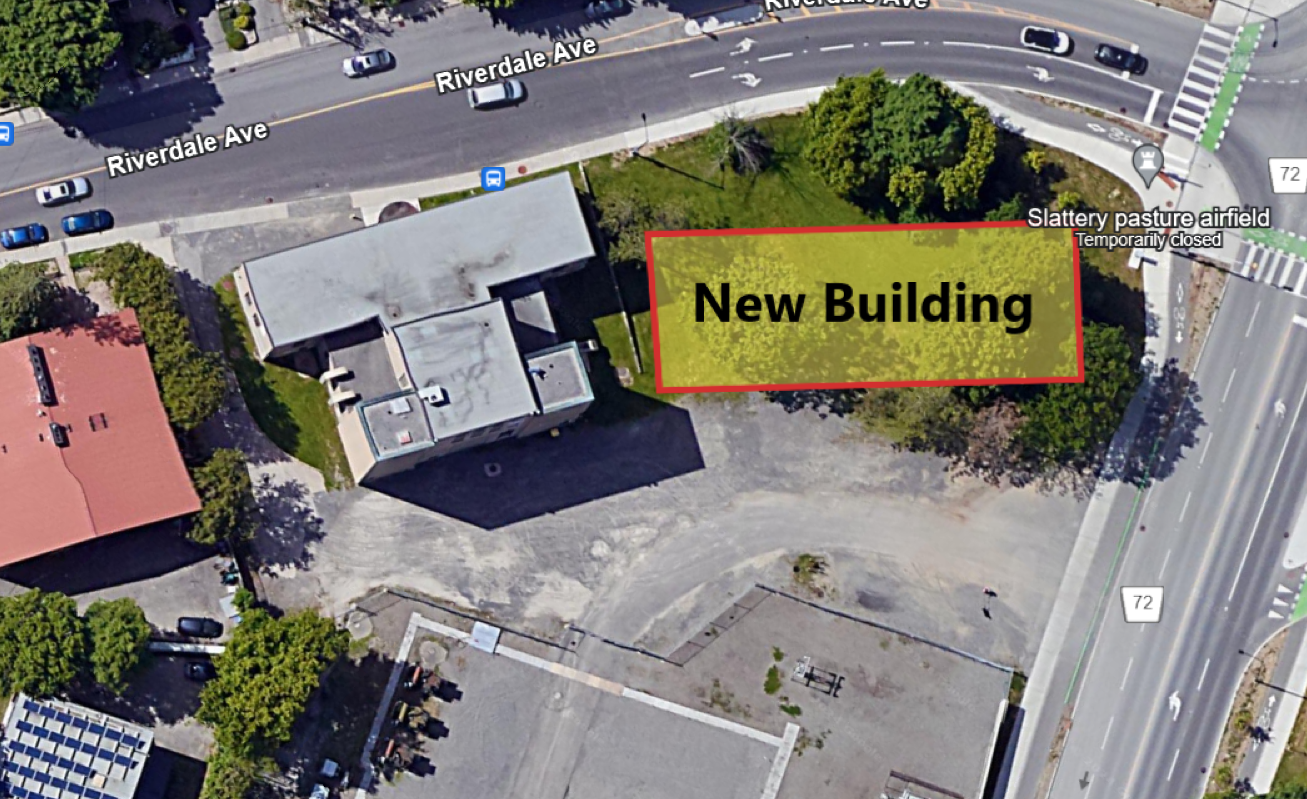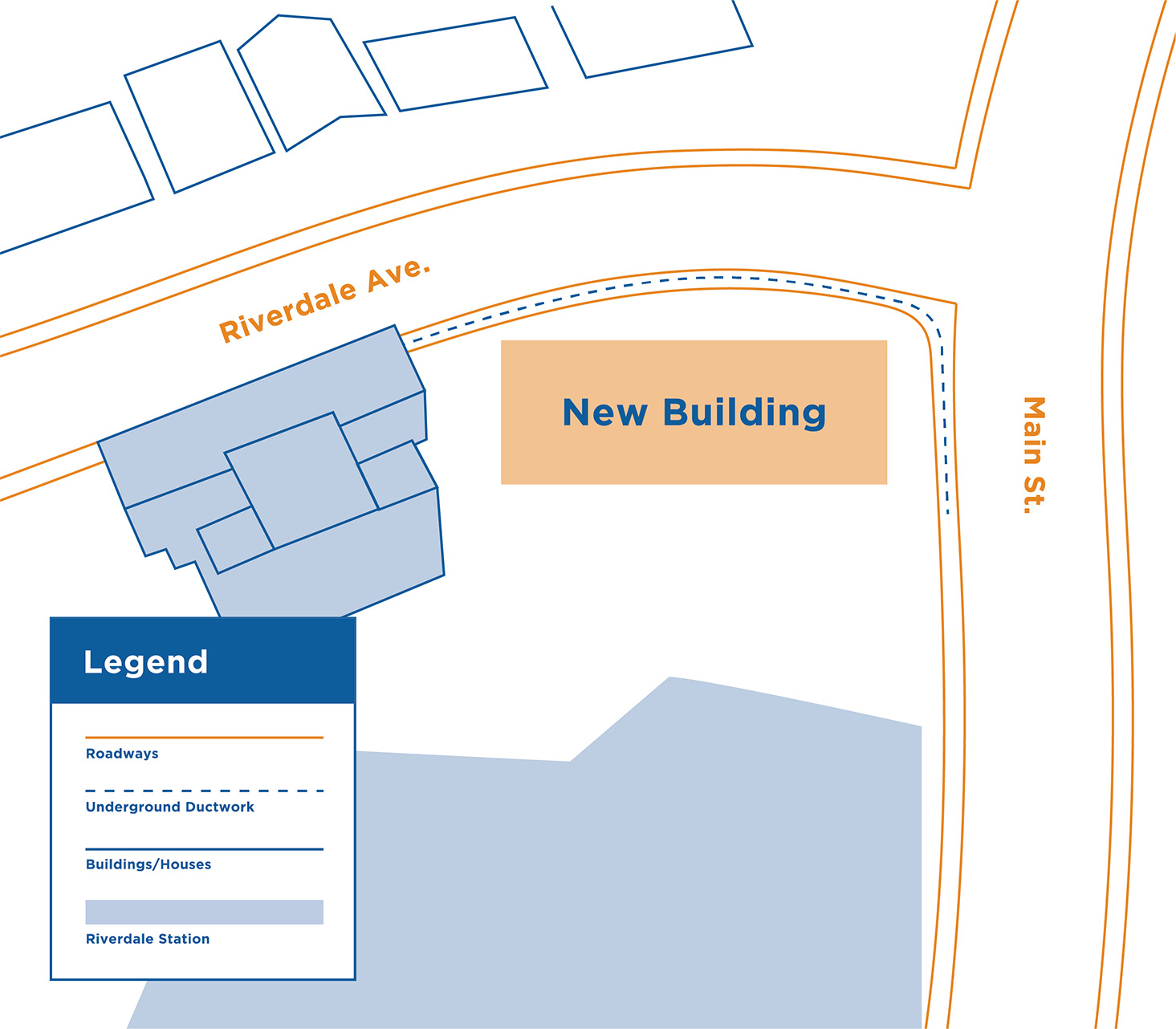March 2024 - December 2026
Demand for electricity in Ottawa continues to grow and electricity needs in the community are increasing due to planned residential and commercial development. To ensure power is available for customers now and in the future in Old Ottawa East, we are upgrading our Riverdale Station. The project involves upgrading electricity infrastructure to increase capacity and replacing aging existing infrastructure.
What will this project include?
As part of the Riverdale Station Infrastructure Upgrade Project, we will:
- construct a new building to house electricity infrastructure on the existing property at the intersection of Riverdale Avenue and Main Street;
- install and connect new 13kV switchgear - a composition of electrical disconnect switches, fuses, and circuit breakers used to control, protect, and isolate electrical equipment - in the new building; and
- install underground electricity infrastructure - specifically a new concrete encased duct - in the roadway.
Some of the existing trees on the property will need to be removed to accommodate the new building. All vegetation removal will be thoughtfully considered, along with mitigation measures. These measures could include tree planting or decorative community-friendly vegetation to help beautify the site after construction.

Please note: The new building illustration is not to scale. It will be smaller than depicted.
Why is this project important?
The Riverdale Station, located at the intersection of Riverdale Avenue and Main Street, is a distribution station built in the 1940s. The station takes electricity from transmission lines at a higher voltage and converts it to the voltage required to supply power to the homes and businesses it serves.
These upgrades are important to ensure that we can continue to meet the capacity and reliability needs of the station’s service area.
How will this project benefit Hydro Ottawa customers?
Once the upgrades are complete, they will provide the neighbourhood - and overall Capital ward - with an increase in electricity supply to meet a growing demand and improve the overall reliability of our system.
The Riverdale Station Infrastructure Upgrade Project will support projected growth in electricity demand for the area and provide redundancy to our system in the event of outages or future extreme weather events. This project is one of many future-planning projects we are spearheading to make our electricity system as resilient, and as sustainable, as possible.
Resources from Community Information Session
Contact
If you have questions about the project, or you would like to receive project updates, including information about upcoming community information sessions, please register to be part of our mailing list. Email us at [email protected].
FAQs
A new brick and mortar building will be built next to the existing Riverdale station at the intersection of Riverdale Avenue and Main Street. It will house major electrical equipment, such as switches, fuses and circuit breakers. We will also be installing underground electricity infrastructure that runs underneath the sidewalk around the north-side perimeter of the property.
The project will support projected growth in electricity demand for the area and provide redundancy to our system in the event of future extreme weather events. Once the upgrades are complete, they will provide the neighbourhood, and overall Capital ward, with improved reliability while ensuring power is available for residents of Old Ottawa East now and in the future.
This project is just one of many future-planning initiatives we are spearheading to make our electricity system as resilient and as sustainable as possible.
Some of the vegetation on the property will need to be removed to accommodate the new building. We will only cut trees which are strictly necessary.
All vegetation removal will be thoughtfully considered, along with mitigation measures, in accordance with the landscape plan and input from the local community. Measures could include tree planting or decorative community-friendly vegetation to help beautify the site after construction.
Construction phase of the project is scheduled to start in Oct 2024 and will continue until May 2026. Construction will be in different phases; building construction, electrical construction and site clean up. See timeline below:
- Tree cutting - March 2024 (or TBD based on migratory birds)
- Underground ductwork - March to May 2024
- Building construction - October 2024 to October 2025
- Electrical installation - October 2025 to May 2026
- Project closing and site clean up - May 2026 to December 2026
To provide sufficient electrical capacity to support growth in the old Ottawa east area of the City, the current plan is to build a one level building to accommodate required electrical equipment. Specific information about the new station is not available at this time as the overall design of the building is still in progress.
The aesthetics of the existing heritage building on site are being considered to complement the design of the exterior of the new building.
Please note: The new building illustrations are not to scale. The actual building will be smaller than shown.
During the construction phase of the project, local residents may see various types and frequencies of construction traffic depending on the stage of the construction. That being said, there will not be a sustained long-term traffic impact associated with the Riverdale project.
Understanding that any construction activities can be very disruptive, we want to assure residents that all construction activities and any possible power interruptions will be scheduled and planned very carefully.
Further, to ensure the safety of the public and our crews as a result of the work required for this project, the majority of the work will be completed weekdays between 7:00 a.m. and 5:00 p.m., and in accordance with City of Ottawa noise by-law. In some cases, construction during rush hour traffic may be prohibited. This is decided on a case-by-case basis by the City of Ottawa, based on specific community and neighbourhood needs.
Once operational, traffic generated by the station will generally be limited to site visits by our technicians. During major weather events, required maintenance or other related system needs, the station may be visited more frequently depending on Hydro Ottawa’s need as part of our commitment to deliver safe and reliable electricity to our customers.
As this project advances nd planned power outages are required to complete the work safely, impacted customers will receive notices in advance of temporary interruptions to their power supply.
If there is a need for a planned power outage of more than four hours in duration, we provide our customers with as much notice as possible (48 to 72 hours). This includes notifications by phone, text and/or email depending on the account contact information we have on file, as well as hand-delivered letters where applicable. We also post notices on the planned work section of our website.
To safely undertake and complete a project, temporary road closures may be required at times. This could result in street lane closures and parking restrictions. To ensure vehicle, resident and staff safety, temporary detour signs directing traffic and pedestrians away from the construction site will be used.
For safety reasons, Hydro Ottawa does not recommend residents use our properties for recreational use. Most of our properties house electrical equipment that is dangerous to the public. Please follow all safety signs.
Residents should use nearby park space and playgrounds for recreation.
The Integrated Regional Resource Plan is a twenty-year plan that has been developed by a regional planning working group consisting of the Independent Electricity System Operator, Hydro Ottawa and Hydro One.
Regional system planning ensures a reliable supply of electricity to regions across the province and considers a range of solutions including conservation, generation, transmission and distribution, as well as other resource options to ensure that electricity is available when needed.
Yes. As a utility, we plan decades ahead and consider Ottawa’s unique electricity needs, including strengthening our own distribution network and infrastructure. We also look at new opportunities and innovative technology like distributed energy resources that can help build redundancy.
From a climate and planning standpoint, Hydro Ottawa considers recent years and events that point towards a new reality requiring contingencies to better protect the electricity grid, our systems and our customers.
Further consideration is also given to meeting greenhouse gas reduction targets set by various levels of governments (plus our own 2030 zero-emission goal), as well as a future of mass electrification.
We are spearheading a lot of future planning to make the electricity system as clean, sustainable, and resilient as possible.
In 2022, excluding major events, Hydro Ottawa customers had power an average of 99.55 per cent of the time (99.987 per cent in 2021). Events like the May 2022 derecho can shake customers’ trust in the reliability of the system and stoke fears of lengthier power outages in the future. As such, Hydro Ottawa is building back stronger and investing in the grid and new technology to mitigate risks.
Electric and magnetic fields (EMFs) are invisible forces that surround all electrical appliances and equipment, including power cords and wiring found in your home. This is the same for outdoor power lines and equipment operated by utility companies. These fields are at extremely low frequency. The field strength is strongest close to its source and fades rapidly as you move away from the source.
Hydro Ottawa defers to Health Canada on the issue of EMFs. Health Canada does not consider that any precautionary measures are needed regarding daily exposures to EMFs at extremely low frequencies.
The electrical infrastructure will be placed inside the brick and mortar building as part of this project, and it will significantly reduce EMF exposure for residents. The design and placement of the switchgear have been carefully considered to minimize any potential effects on the surrounding environment.





